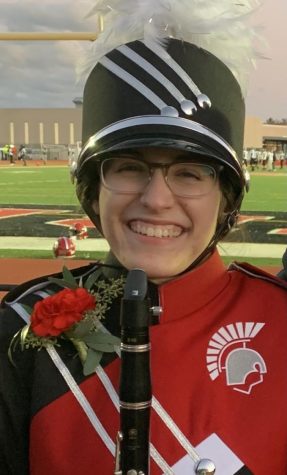Thermostats Keeping Classes Cooler in DHS
February 6, 2020
Classrooms in DHS are meant to foster learning and promote focus. Paying attention is difficult, and most can still manage. But for students and instructors in two halls, rising and plummeting conditions prove to be distracting.
While the majority of the school is comfortable, there are wavering temperatures in two areas. In upper X Hall, for at least nine years, temperatures have fluctuated in the classrooms. Ashley Livingston, a mathematics teacher in room X202, spoke about her experiences. “Within a class period, the temperature may change from comfortable to warm to cold several times,” she explained. “In the warmer months, it is warmer more often, and in the colder months, it is colder more often.” In response, the school has installed thermostats to monitor the temperature in their classrooms. It is in their hopes that this approach will remedy the problem.
In contrast to upper X Hall, heat surges in the Q Hall classrooms. The heat there is most conspicuous during winter seasons. To counter the high temperatures, some teachers in Q Hall turn on air conditioning. Other attempts to cool down classrooms include opening doors and propping open windows. Still, these efforts inadvertently waste energy. History teacher Amy Skonberg said, “[The temperature] became noticeable when the heat was on consistently.” She spoke of her classroom in Q Hall, stating, “Q108 is usually too warm. Some days, the thermostat reads 75 when I open the room in the morning, and other days, it reads 72.”
The facilities maintenance team at Deerfield High School has answered the issue; in numerous Q Hall classrooms, there are thermostats to monitor the temperature, and their accuracy can be reviewed. Furthermore, the Heating, Ventilation, and Air Conditioning (HVAC) system at Deerfield High School remains stable for most parts of the building, and upper X and Q Hall are the two problematic sites.
Building Supervisor William Knesley addressed that, presently, District 113 has been upgrading the school’s building automatic system. “We have a very large building with different types of HVAC equipment in it,” Knesley said. He elaborated that, with the advancement, “We have better control than we have had in the past.”
The building automatic system runs through the school, and then records the temperature in each room. After determining the temperature in a room, the system then distributes energy. The ventilation also depends on the size of the room, and so spaces of every size receive the correct amount of air conditioning and heating. Since it has been implemented, the school’s energy management strategy remains generally steady. Additionally, with the current improvements being made to the network, the building board continues to solve the upper X and Q Hall anomalies.
The fluctuation issues are less dramatic than they have been in previous years. Thanks to the new measure, they will further reduce, and concentration can improve.

